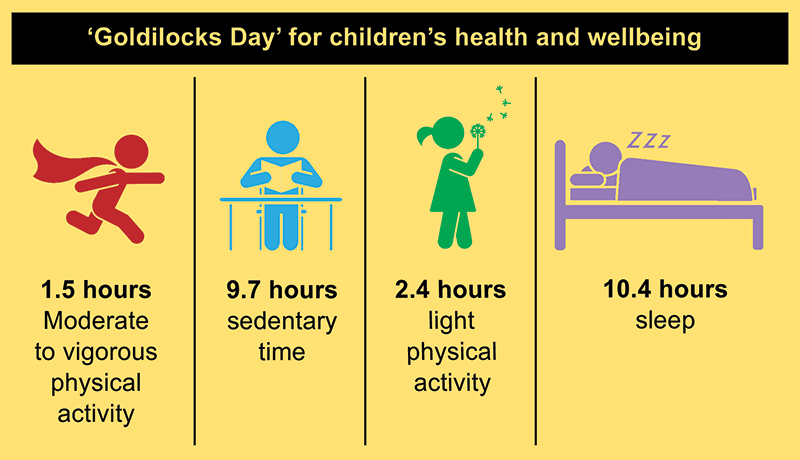New ‘Goldilocks calculator’ could be key to ensuring children’s health
By Annabel Mansfield
 HEALTH
HEALTHResearchers at UniSA and Murdoch Children’s Research Institute have developed an online calculator that helps parents and caregivers determine how long children should be spending on schoolwork, rest and play.
Lead researcher Dr Dot Dumuid says the new time tool, the first of its kind, will help parents tailor their children’s days based on their personal needs.
Focusing on key health outcomes – physical health, cognitive/academic abilities, and mental health and wellbeing – the novel time tool lets you identify and personalise optimal times for your child’s sleep, sedentary behaviours (reading, studying, downtime), light physical activity (chores, walking), and moderate-to-vigorous physical activity (sports and exercise).
“From the moment they wake, to the time they go to bed, many parents and caregivers spend a lot of time shaping their children’s time,” Dr Dumuid says.
“We’re prompting them to do their homework, to take out the rubbish, turn off their screens, practice their instrument, eat their lunch, play sports – the list in endless. Add gaming, computers, and social media to the mix, and finding healthy balance of all these activities can be harder than ever.
“Our research helps make sense of children’s competing demands and goals by clarifying how to best allocate the hours and activities across a day.
“The result is a world-first customisable time tool – the Goldilocks Day calculator – which lets parents easily identify what activities will best help their child – physically, mentally or academically.”
The Goldilocks Day calculator builds on existing Australian and global health guidelines to predict optimal time-use compositions using mental health, academic performance, and physical fitness data of more than 1182 children (aged between 11 and 12 years), via the Australian Child Health CheckPoint study.
It lets parents rank the importance of physical health, mental health, and cognitive abilities for their child’s health to calculate the best time allocations for sleep, study, exercise and play.
If all health factors are weighted equally, the perfect ‘Goldilocks Day’ for children comprises:

However, the study found that optimal daily durations varied widely for different health outcomes.
“Just as all children are individuals, so too are their health needs, which is why we’ve made the Goldilocks Day calculator customisable, based upon their individual needs,” Dr Dumuid says.
“For example, if your child needs to be more active, then getting up early on the weekends could be more important than sleep – so you might sacrifice sleep and sedentary time to boost exercise.
“Or, if your child is struggling with anxiety, then an earlier bedtime is more beneficial to their health than extra sedentary time, say on a computer.
“And, if boosting grades is the goal, more sedentary time – or study time – is needed, concurrently reducing sleep and exercise.
“It may seem logical but fitting everything into the day is very challenging for kids and parents. And with statistics showing that only 15 per cent of Australian kids are achieving daily activity guidelines, we still have a way to go. Internationally, this is sometimes as low as 6 per cent.
“Hopefully this the Goldilocks Day calculator will help parents better manage their children’s time and learn how to personalise it based on their children’s needs.”
You can access the Goldilocks Calculator online. Use the slider bar to select weightings for different health domains and the calculator will automatically adjust times for sleep, sedentary time, and physical activity.
Other Stories
- Accenture and UniSA join forces to develop the digital business skills of tomorrow
- New ‘Goldilocks calculator’ could be key to ensuring children’s health
- Pioneering tech enables monitoring of a baby’s vital signs without contact
- Three minute thesis winner to make ovarian cancer treatment more effective
- From the Vice Chancellor
- Achievements and Announcements
- Olympic medal hopes for sonography student prove ‘ultra sound’
- UniSA launches guide to foster respectful engagement with Aboriginal Peoples
- Video: Innocent or guilty? Virtual reality gives us the verdict
- Meet the UniSA student who’s risen to footballing fame with the Crows
- The latest books from UniSA researchers
- In Pictures: Purkarninthi in Residence art installation launch and 2021 Art on Campus Exhibition




